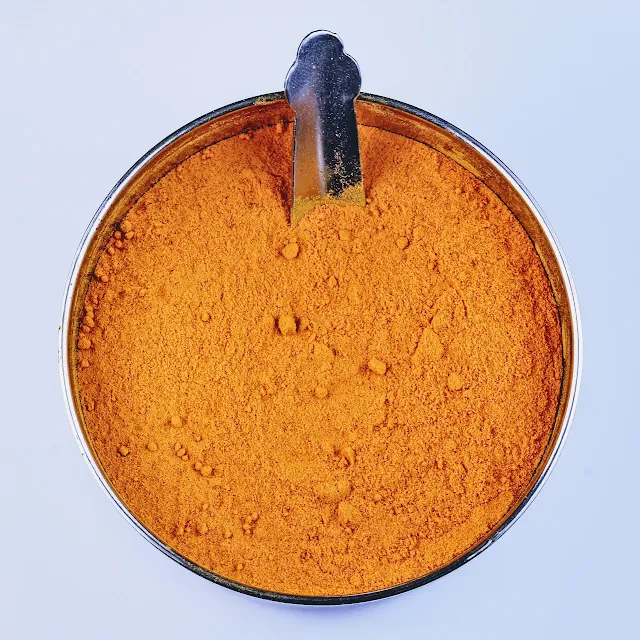Kunyit or turmeric is an essential ingredient in many Malay and Indonesian dishes. It is used in nasi kunyit, rendang, curries, etc. Turmeric is one of the ingredients that gave many Singapore, Malaysia, Indonesian dishes that beautiful golden yellow hue.
Turmeric is a type of ginger. In Chinese, it is known as 黃薑 or yellow ginger because of its yellow colour. In Malay, it is known as kunyit.
The part used for food is the root of the turmeric plant (scientific name Curcuma Domestica Valeton).
Turmeric is used in curries, rendang, etc., either fresh or dried and made into powder.Turmeric aroma is pungent like mustard and tastes subtly bitter. It is combined with other spices such as lengkuas (blue ginger), chili pepper, etc in curries and rendang.
Hindu priest and Buddhist monk robes are dyed with pigment from turmeric. The yellow and gold colour comes from the compound curcumin in turmeric. Turmeric, of course, is an important ingredient in Indian curries and masala as well as traditional medicine.

Various sub-species of the turmeric plant are native to south Asia, through Myanmar, Thailand to the Malay peninsula and archipelago.
Use of turmeric in food in the Malay peninsula and archipelago probably began in the first century with the arrival of Hinduism, Buddhism and forms of state organisation from India. In India, turmeric use is mentioned in Ayurvedic medicinal texts dating back to 500 BC.
The Buddhist Srivijaya empire ruled much of the Malay peninsula and archipelago from 650 to 1377.
The founder of the kingdom of Singapura, Sang Nila Utama, was a Srivijayan prince who founded his kingdom on Temasek island in 1299.
We can, therefore, infer that turmeric was used in making Gulai Rusa or deer meat curry during the period of the kingdom of Singapura (1299 - 1398).
Turmeric would similarly be an ingredient in Gulai Siput Barai or clam curry.
Nasi kunyit was probably served in the kingdom Singapura. It would be made with glutinous rice soaked in water with turmeric powder and cooked either by boiling or steaming.













No comments:
Post a Comment
All comments submitted with genuine identities are published